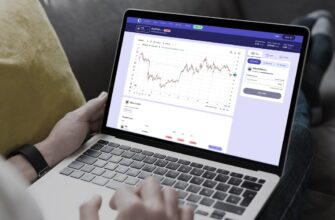- Unlock Maximum Returns: Why Pendle is Ethereum’s APY Powerhouse
- How Pendle Supercharges Your Ethereum APY
- Step-by-Step: Depositing ETH on Pendle for Optimal APY
- Why Pendle Outperforms Competitors for ETH APY
- Critical Risk Management Strategies
- FAQ: Depositing Ethereum on Pendle
- Conclusion: Is Pendle Right for Your ETH?
Unlock Maximum Returns: Why Pendle is Ethereum’s APY Powerhouse
In the competitive world of DeFi yield farming, Pendle Finance has emerged as a game-changer for Ethereum holders seeking exceptional returns. By depositing Ethereum on Pendle, savvy investors routinely achieve APYs dwarfing traditional platforms—sometimes exceeding 15-30% through innovative yield tokenization. This guide breaks down how Pendle’s unique architecture converts passive ETH holdings into high-yield assets while navigating risks and optimizing earnings.
How Pendle Supercharges Your Ethereum APY
Pendle transforms yield generation through two revolutionary mechanisms:
- Yield Tokenization: Splits your ETH deposit into Principal Tokens (PT) representing your initial capital and Yield Tokens (YT) representing future earnings. This allows separate trading of yield rights.
- Automated Market Making: Pendle’s AMM creates liquid markets for YTs, enabling dynamic pricing based on demand. When yield demand surges, APY escalates dramatically for depositors.
Unlike static staking pools, Pendle’s system lets you capitalize on market volatility—traders bidding aggressively for future yield rights directly boost your returns.
Step-by-Step: Depositing ETH on Pendle for Optimal APY
- Wallet Setup: Connect a Web3 wallet (e.g., MetaMask) to Pendle.fi. Ensure sufficient ETH for gas fees.
- Navigate to “Earn” Section: Select Ethereum from supported assets and explore live pools. Filter by highest APY using real-time analytics.
- Assess Maturity Dates: Choose pools with optimal maturity timelines (typically 1-6 months). Shorter terms offer flexibility; longer terms may have higher base yields.
- Deposit & Tokenize: Input ETH amount. Pendle automatically creates PT/YT tokens. Approve transactions (2-3 confirmations).
- Maximize Earnings: Stake YTs in Pendle’s liquidity pools for extra rewards or hold PTs for principal redemption at maturity.
Why Pendle Outperforms Competitors for ETH APY
- Dynamic Yield Amplification: APY compounds via trader activity—unlike fixed-rate platforms like Lido or Rocket Pool.
- Zero Lockups: Sell YTs anytime on integrated DEXs (e.g., Balancer) for instant liquidity vs. rigid unbonding periods.
- Multi-Layer Rewards: Earn base yield + trading fees + PENDLE token incentives (up to 5-10% bonus APY).
- Gas Efficiency: Batch transactions reduce costs by 40% compared to manual yield farming.
Critical Risk Management Strategies
While APYs are enticing, mitigate risks with these precautions:
- Smart Contract Vulnerability: Use only audited pools (Pendle’s contracts verified by PeckShield).
- Yield Volatility: APY fluctuates with market sentiment—diversify across multiple maturity dates.
- Impermanent Loss (IL): Affects liquidity providers; pure ETH depositors avoid IL but face YT price risk.
- Exit Strategy: Monitor maturity dates; unredeemed PTs after expiry incur gradual value decay.
FAQ: Depositing Ethereum on Pendle
Q: What’s the minimum ETH deposit on Pendle?
A: No minimum, but gas costs make deposits under 0.1 ETH inefficient.
Q: How often is APY compounded?
A> Continuously—yield accrues block-by-block and compounds when reinvested.
Q: Can I lose my principal ETH?
A> Principal (PT) remains secure if held to maturity. Early YT sales may result in capital loss if yields decline.
Q: Are Pendle earnings taxable?
A> Yes—yield and token rewards are taxable events in most jurisdictions. Track transactions.
Q: How does Pendle’s APY stay higher than Aave/Compound?
A> Pendle’s yield-trading demand creates premium pricing impossible in standard lending protocols.
Conclusion: Is Pendle Right for Your ETH?
For Ethereum holders prioritizing yield maximization, Pendle delivers unparalleled APY through its novel tokenization model. While requiring more active management than passive staking, its 2-3x higher returns justify the complexity. Start with small deposits during low-gas periods, diversify across maturities, and monitor Pendle’s governance updates for new yield opportunities. As DeFi evolves, Pendle remains at the forefront of intelligent Ethereum yield optimization.








